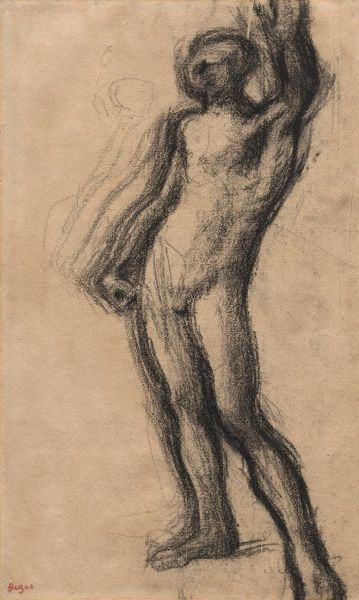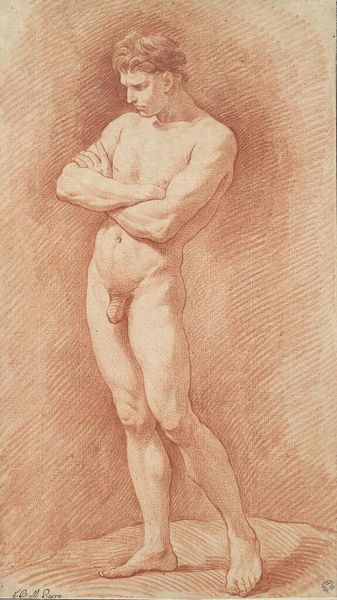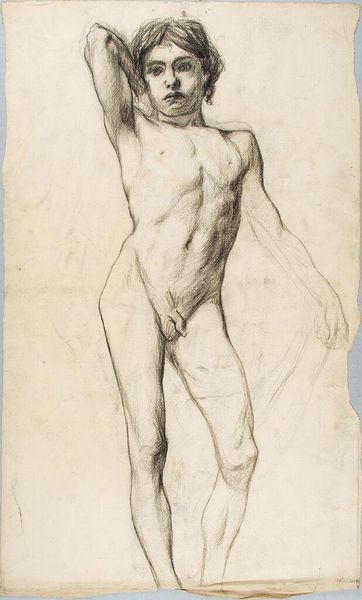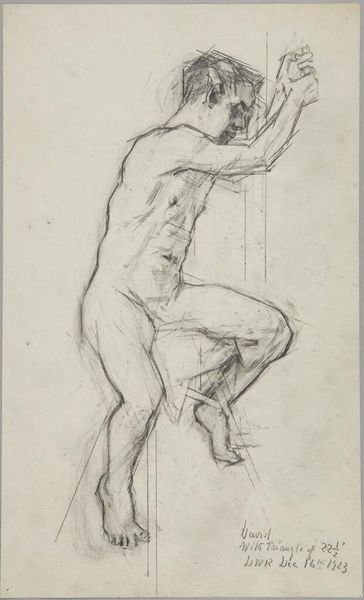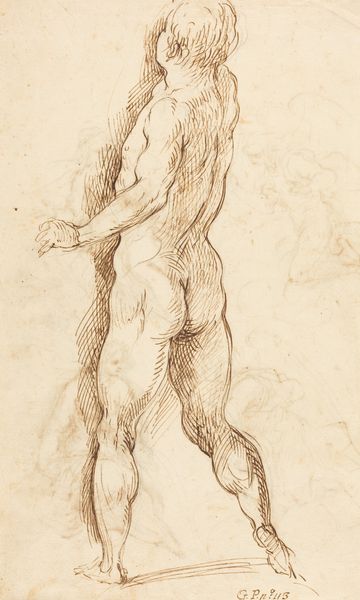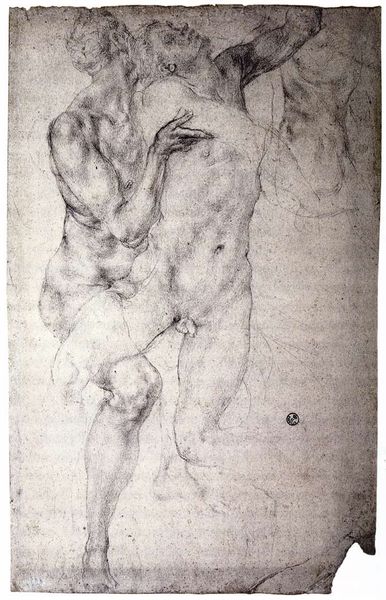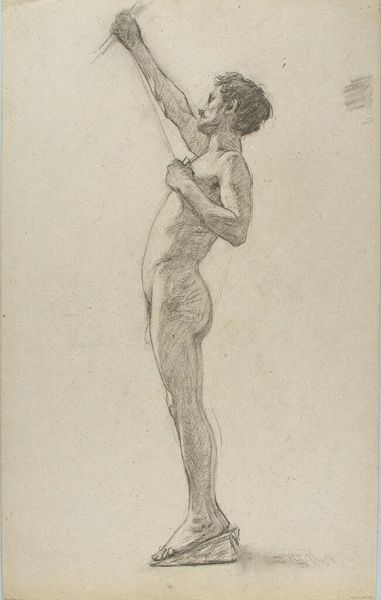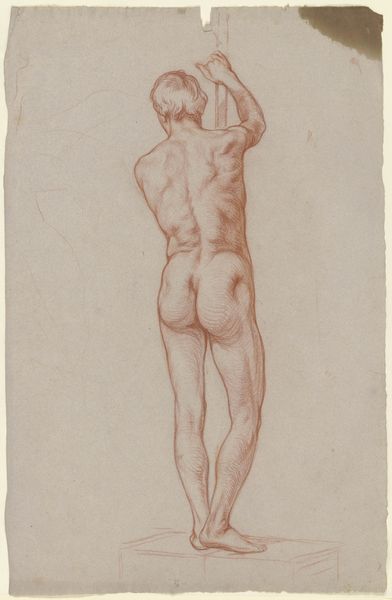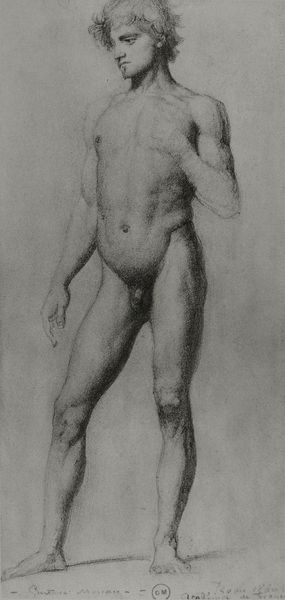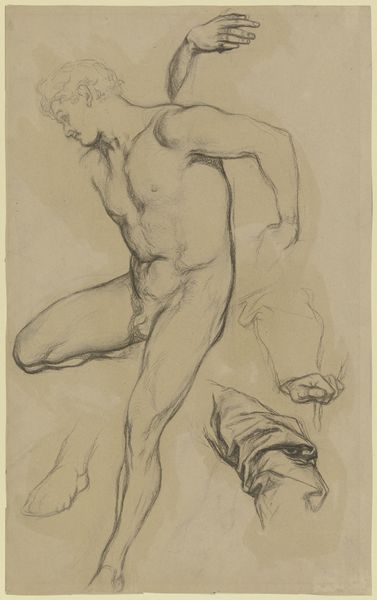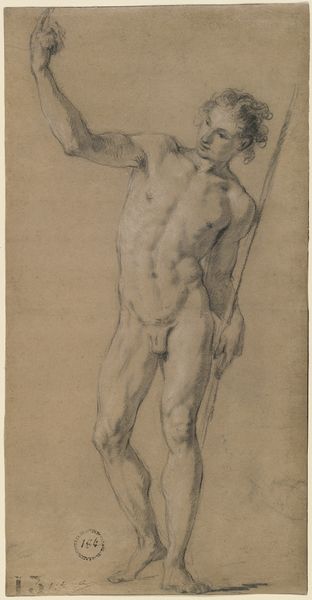
Dimensions: 49.3 x 31 cm
Copyright: Public domain
Editor: Here we have Paul Cézanne’s "A male nude," created in 1863 using charcoal. It's striking how the figure is both classically rendered and intensely shadowed. How do you interpret this work within the art world and its time? Curator: This drawing, executed in charcoal, reflects Cézanne's early academic training but also hints at his departure from it. Consider the social and institutional context: figure drawing was a cornerstone of artistic education. Museums like the Fitzwilliam perpetuated these traditions by collecting and displaying such works. However, the emphasis on raw, unidealized form suggests a burgeoning challenge to conventional beauty standards. Why do you think Cézanne focuses on the unidealized body here? Editor: Perhaps to highlight the reality of the human form, pushing back against the polished figures often celebrated? The almost harsh application of charcoal certainly emphasizes a raw and honest representation. Curator: Exactly. We have to remember the socio-political undercurrents influencing art. The rising tide of realism sought to portray everyday life and experiences truthfully. This departure from academic idealism aligned with the changing social attitudes towards representing reality. The piece shows Cézanne finding his feet. Think of the gaze directed towards the artist – what statement could that pose make? Editor: The pose feels very self-conscious to me. Like, “I know I’m being watched, and I'm okay with it”. What is the social perception, and what does he seek to gain from this depiction of male vulnerability? Curator: Precisely. Cézanne is playing with the expectations. It makes us consider the politics of observation. What new insight about art have you gained after taking all of that in? Editor: Thinking about the historical and social factors at play really changes how I see the artwork. It helps me look past just the technique and really consider what the artist might have been trying to say about art and society itself!
Comments
No comments
Be the first to comment and join the conversation on the ultimate creative platform.
